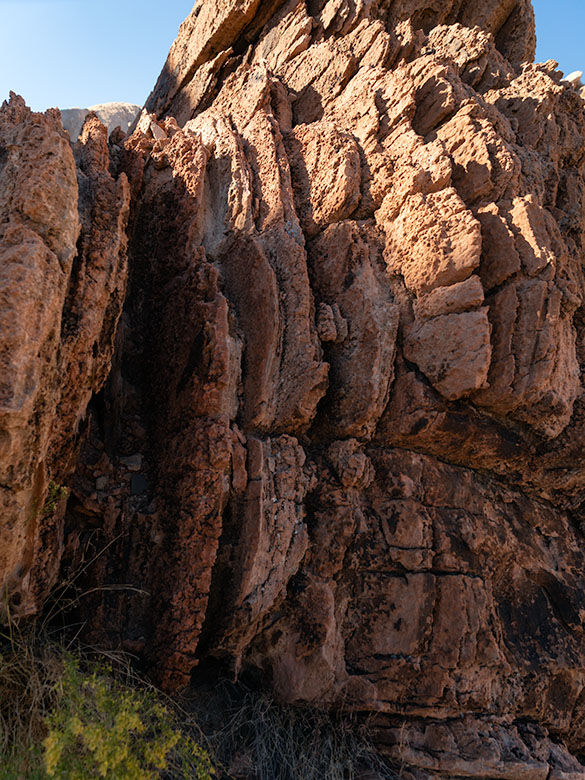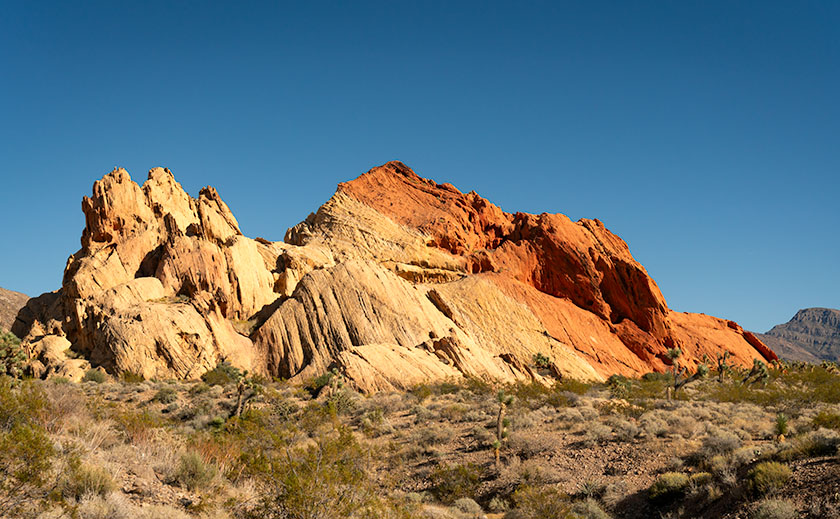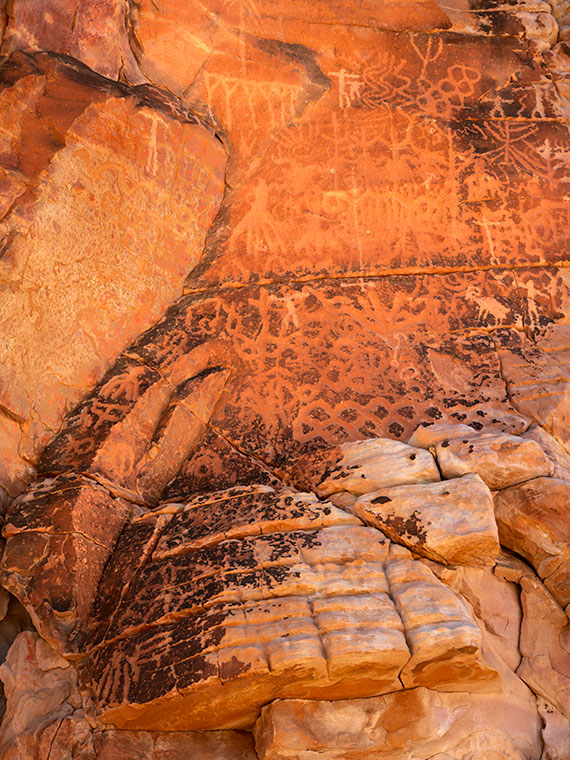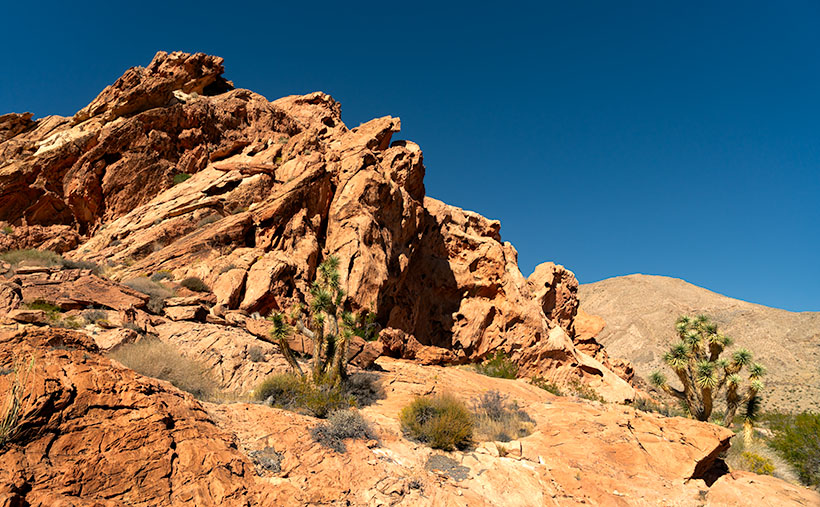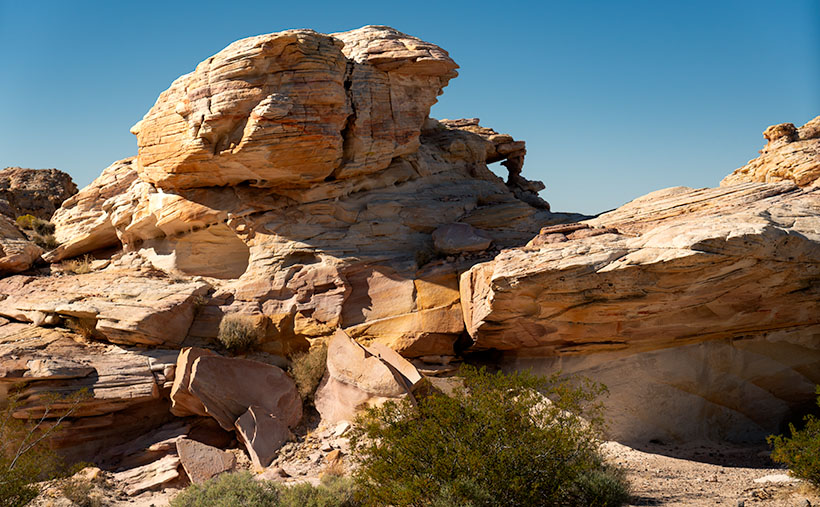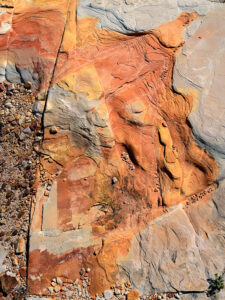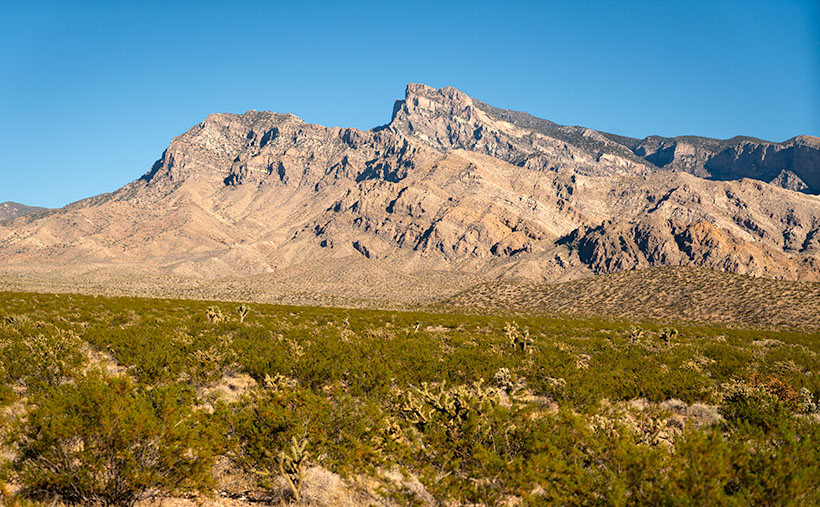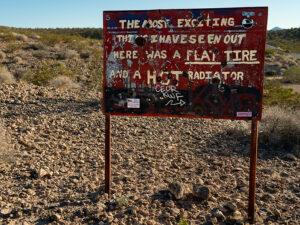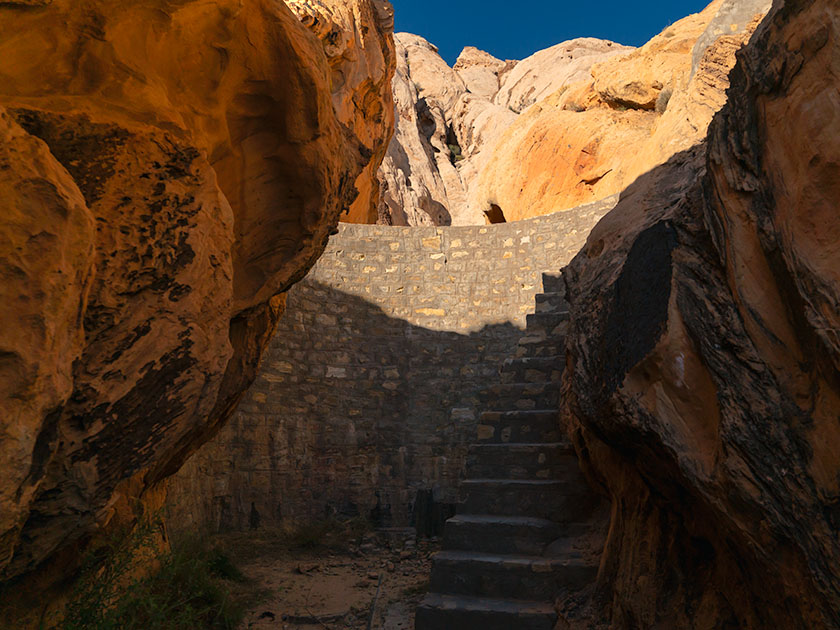
Victorious in my quest to capture the ancient whispers etched into stone, I returned to our trusty steed, the Turd. There, amidst the dust and echoes of bygone civilizations, sat Queen Anne; her latest book–escape, concluded. Her gaze met mine, an unspoken dialogue of adventure’s end, punctuated by a brief, ‘Can we go now?’ Her tone carried the weight of a royal decree, yet I knew the kingdom’s treasury of wonders still had one gem left to unveil.
At the end of the infamous paved road, you can turn south towards the abandoned town of Gold Butte or go straight towards the Arizona border and the Grand Canyon—Parashant National Monument. Both roads are equally evil to drive on, but I wanted to find another relic of history—a WPA-era dam, so I started east. We didn’t travel far because I spotted a cistern on the left as soon as we drove through the first dry wash. I pulled the truck over and grabbed my camera.
The cistern looked like a dry concrete bathtub, and a rusty pipe beckoned from the cistern to a narrow canyon on the right. A couple of creosote bushes blocked the view (and the path), so I brushed them back with my arm and saw the dam. It looked like a scale model of the Hoover Dam 50 miles downstream. Although it was built in the 30s and no longer maintained, it looked like it would still hold water if you closed the gate and valves. It is another testament to those folks’ work during the Great Depression.
After getting some shots, I wanted to see how deep the backside was, which meant climbing the stairs. In my younger days, I would have said, “Nothing to it,” and jogged up the stairs. But there’s no handrail, and my balance isn’t the same, so I did it the hard way—backing up one step at a time while sitting on my butt. I got my dose of vertigo and started back down the stairs when three outdoorsmen walked through the slot. My face turned red, and I apologized, “Sorry guys, this is how we geezers climb stairs these days.” One of them quipped, “We understand—Mister Girly-Boy.”
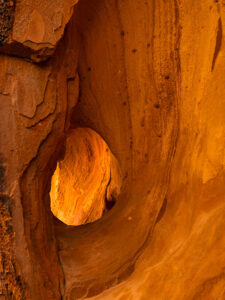
This week’s other photo is of a natural erosion window along the canyon’s narrow. Unless you’re the stature of our friend and frequent commenter, Deb Poteet, you can frame your face with it by standing on your toes. As usual, Anne wouldn’t get out of the car, so I had to settle for shooting the opening without her pretty face. Still, it’s pretty cool.
In the mirror
Queen Anne and I covered a lot of ground this year. We visited two California Wine regions without being tossed out on our ears. We followed some of our favorite trails and got reacquainted with the charming cities of Bisbee, Tombstone, and Douglas. We explored the Beeline Highway and the Mazatzal Mountains, shot wildflowers in the spring, got caught in a monsoon storm at sunset, and discovered some fantasy shapes in Prescott’s Granite Dells City Park. With pandemic restrictions lifted, we did a decent job of broadening our range and bringing you more diversity with this year’s photos and stories.
This has been a year of growth for us. I’ve tried to improve my writing skills. I completed a couple of online creative writing courses. You’d think it would make my work more manageable, but it didn’t. What I used to knock out on a Sunday morning now takes me three days of writing, editing, and revising before I’m ready to publish. I also invested in a grammar checker that—hopefully—gets most of the commas in the right places.
I’ve been tinkering with my photo processes by watching online photographers. I picked up some new tips and tricks, which I’ve tried to pass along to you in the Techniques section. I think you found them helpful because I’ve received positive feedback from you. Finally, to attract new subscribers, we started producing monthly YouTube videos. In each of the last few months, I converted one of my static portfolios into a five-ish-minute video with music and voice-overs. With these new videos, we’re blending the old-world charm of static images with the zippy excitement of moving pictures—without the smell of darkroom chemicals. It seems to be working because my web traffic is on the rise.
Through the windshield
I have an Arizona wall map on our laundry room wall with colored dots indicating the places we’ve visited in the last couple of years. Instead of being evenly distributed, two empty spots glare at me from the map. The first is along the southern border between Nogales and Yuma. Since that’s restricted chiefly to military ranges, there’s not a lot I can photograph without starring in my impromptu sequel to North by Northwest. The other section is the northeast corner of Arizona—the Navajo and Hopi reservations. I intend to paste a dot or two in that corner next year. Maybe you could suggest some locations.
There’s more to discover at Gold Butte National Monument. I plan to return this spring if the Turd’s crummy tires ever wear out. Getting stuck out there without communication is a genuine concern for us. Some sights we missed this year include Devil’s Throat, the remains of Gold Butte’s ghost town, and Little Finland.
Finally, next year’s wine region adventure will be in Northern California. Will it be Napa, Sonoma, or the Russian River? Let us know where your favorite California wine comes from. We haven’t picked a winner yet, but the trip will be in August. As Samuel Clements once said, “The coldest winter I ever spent was a summer in San Francisco.” Some dispute that the quote is genuine, but for us desert dwellers, it’s a challenge.
Queen Anne and I wish you a very happy and prosperous New Year. We hope you’ll continue joining us on our escapades and maybe invite some friends. We’re always delighted to see you in the back seat. Feel free to share your New Year’s adventure plans in the comments below. They give us ideas for which roads we take.
Till next time, keep your spirits high and your humor dry.
jw
BTW:
Last week, I released my latest YouTube video based on my portfolio of pictures of California. It’s five minutes of eye candy, and I invite you to see it by using this link: [https://youtu.be/cgXAHPyzQ5Y]

